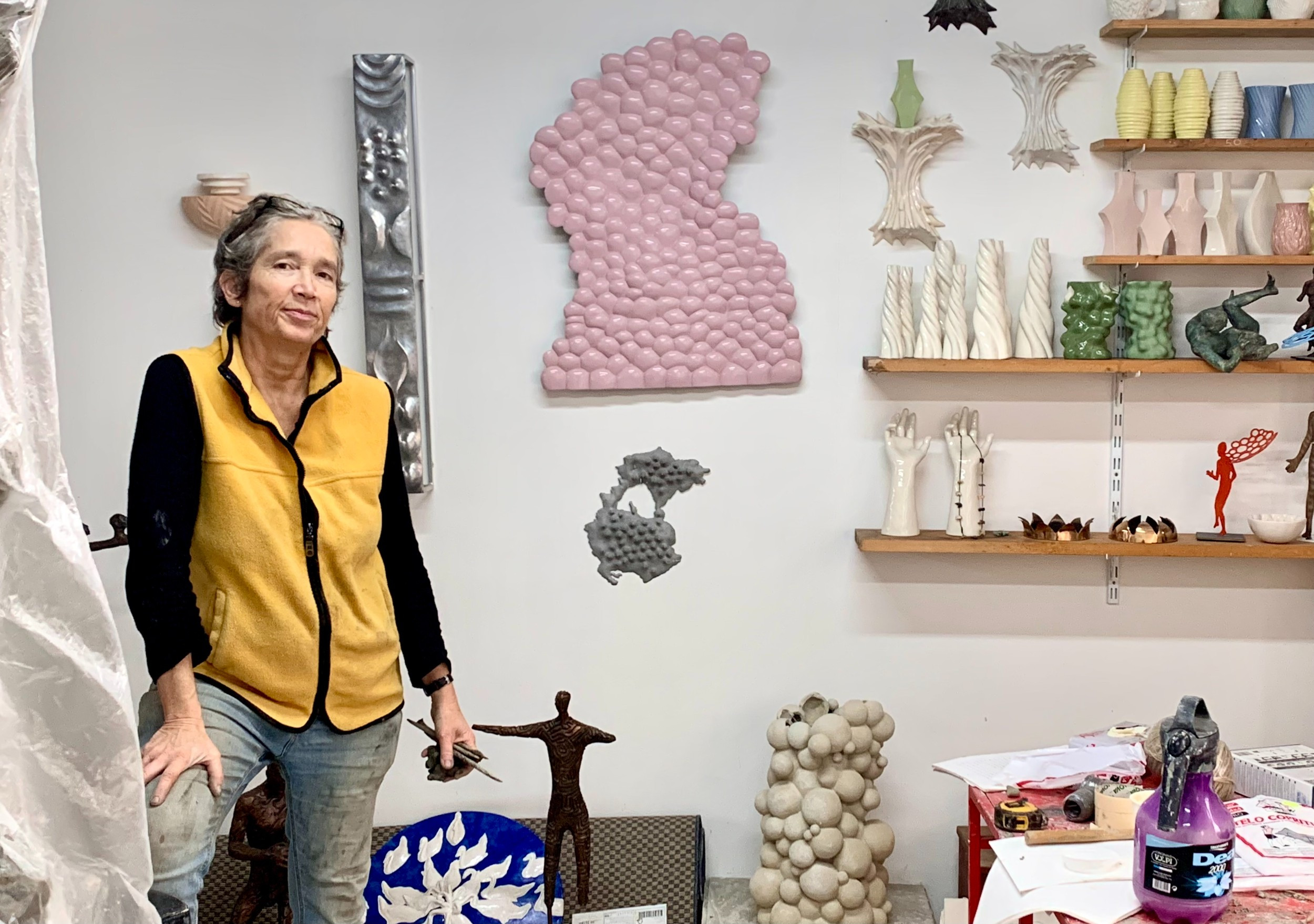
Maja Thommen, 2025
Originally from Zurich, Maja was always keen to leave Switzerland and with an Italian grandmother perhaps Italy was always going to be her destination. She moved to Italy in 1991.
She speaks to us about how her approach to work has changed. When she was young she liked seeing the impression her hands made on the work, while now she seeks smoothness and perfection.
We meet Maja at her home - Artists Hill - an old farmhouse, surrounded by olive groves and a huge vegetable garden, which she has renovated into a home, studios, and a part that she rents out.
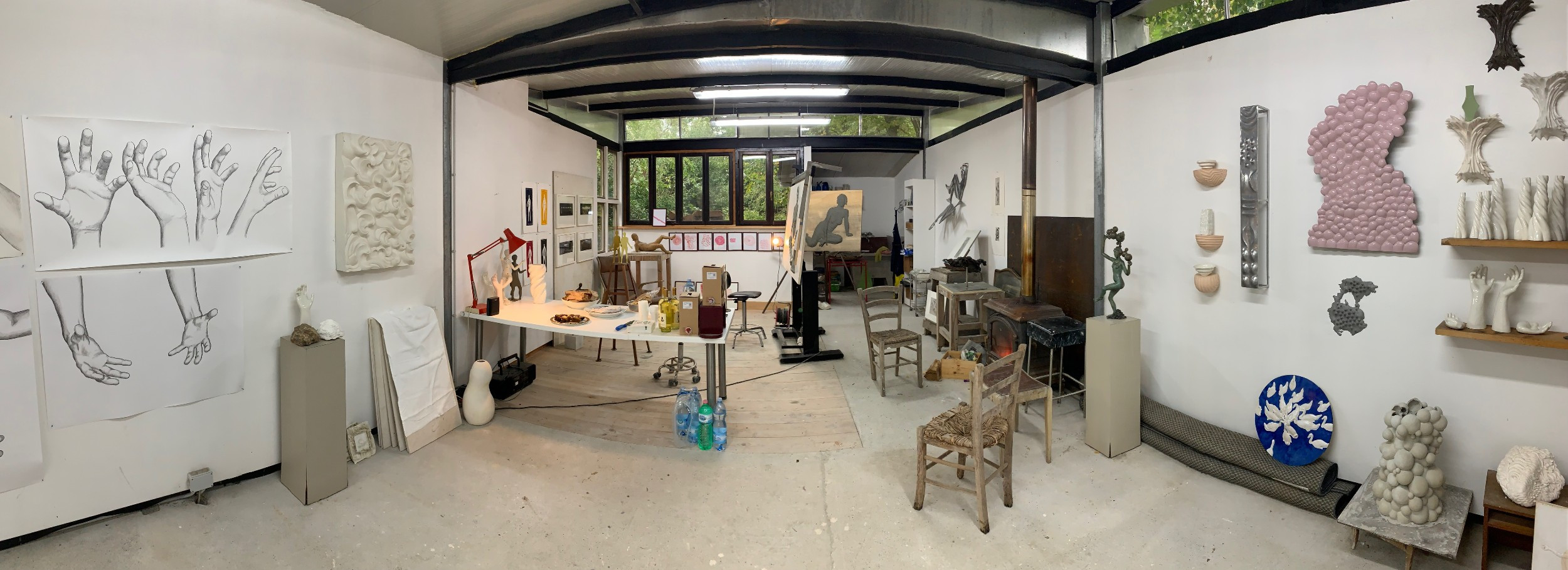
First Maja shows us the room where she draws, and then we move over to her new modelling studio, opposite the house.

In the middle of this room, towering above her, is a spiral column. It’s a plastercast - soon to be realised in acrylic resin and earth.
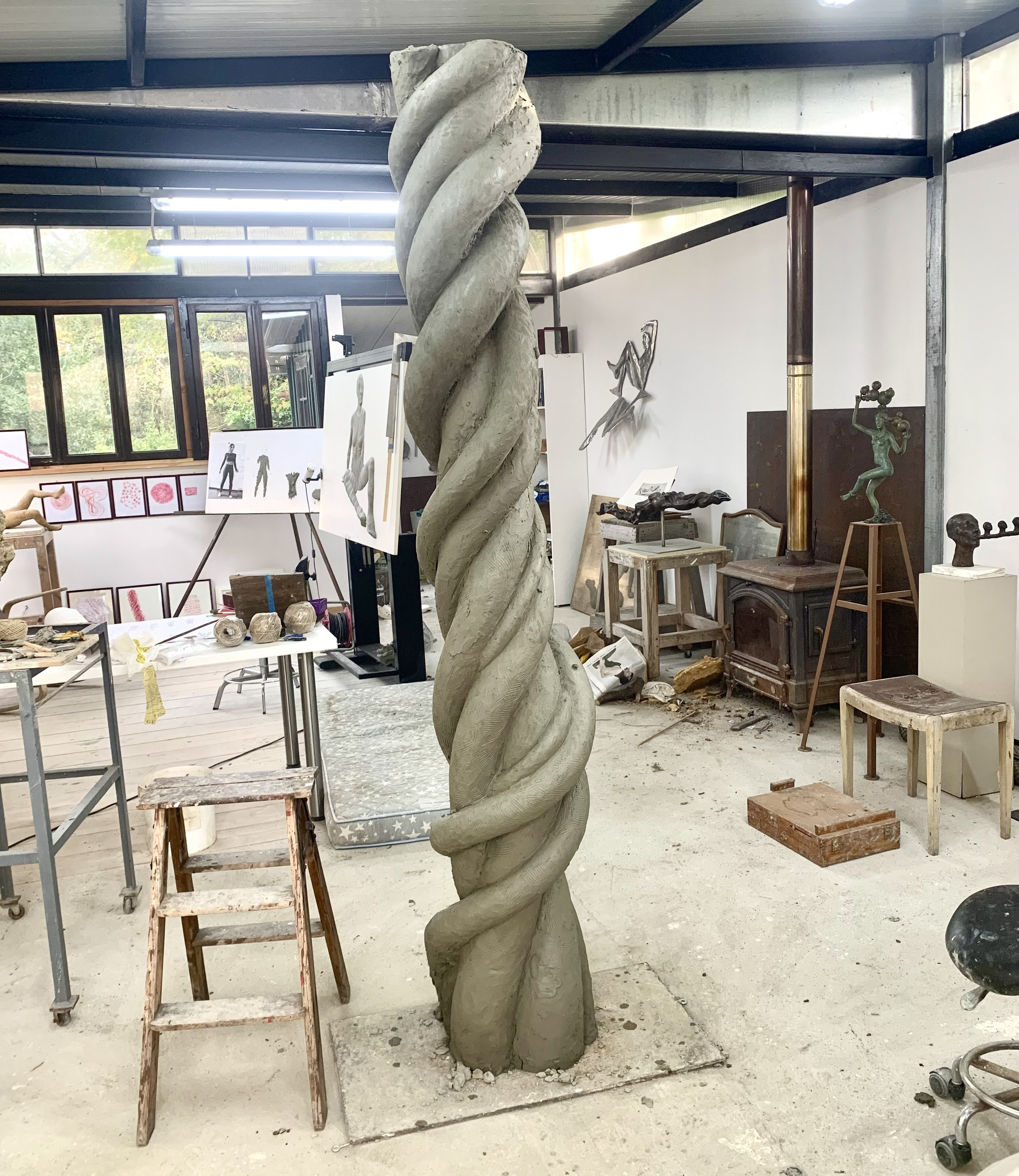
Maja Thommen, work-in-progress on Spiral, 2025
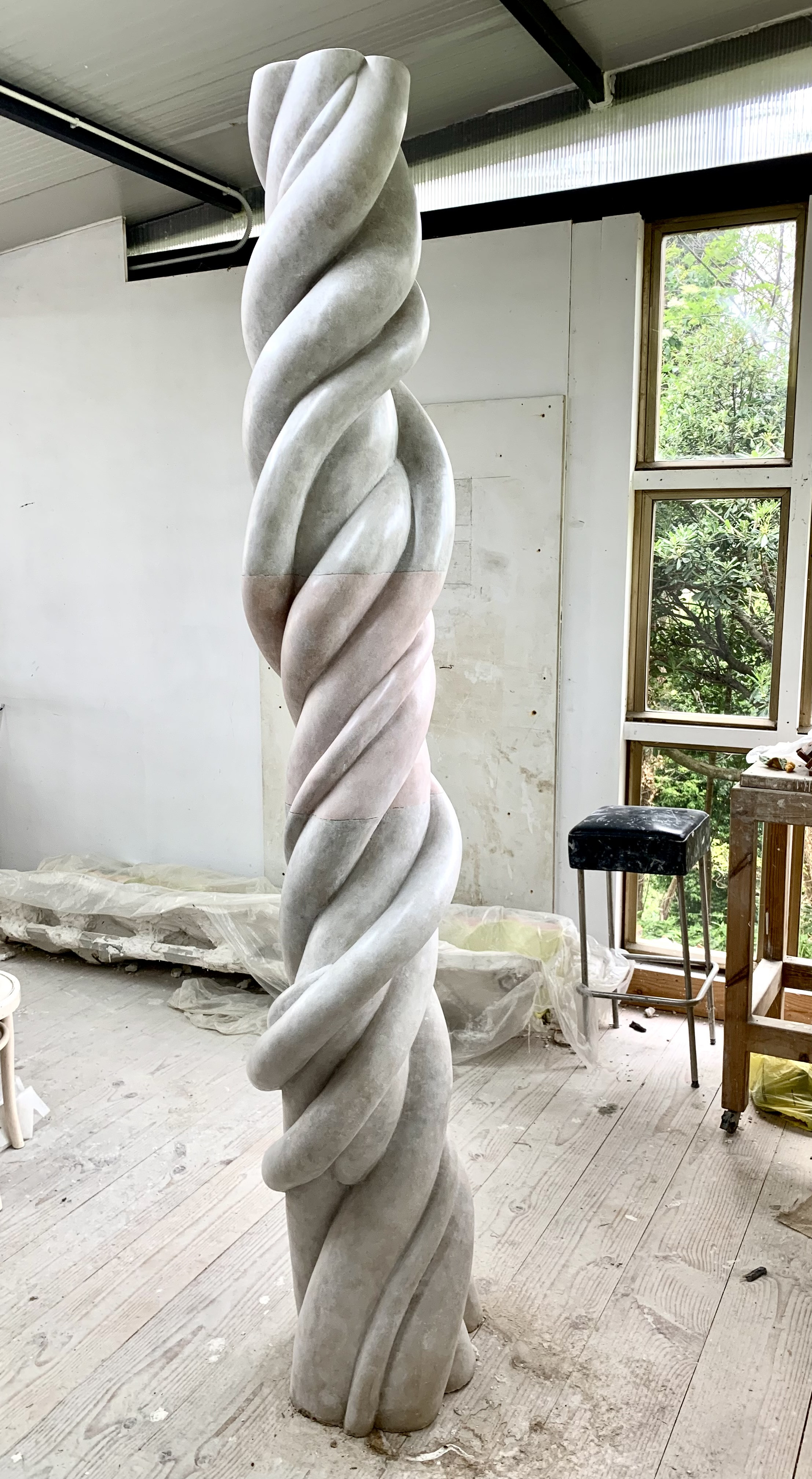
Maja Thommen, work-in-progress on Spiral, 2025

Maja Thommen, Spiral, 2025
Maja tells us about a bas relief project in 16 panels called dressing. The question she originally posed was, “Can we change religion like clothes or is religion something inherent to us, you know, is it like part of us?"
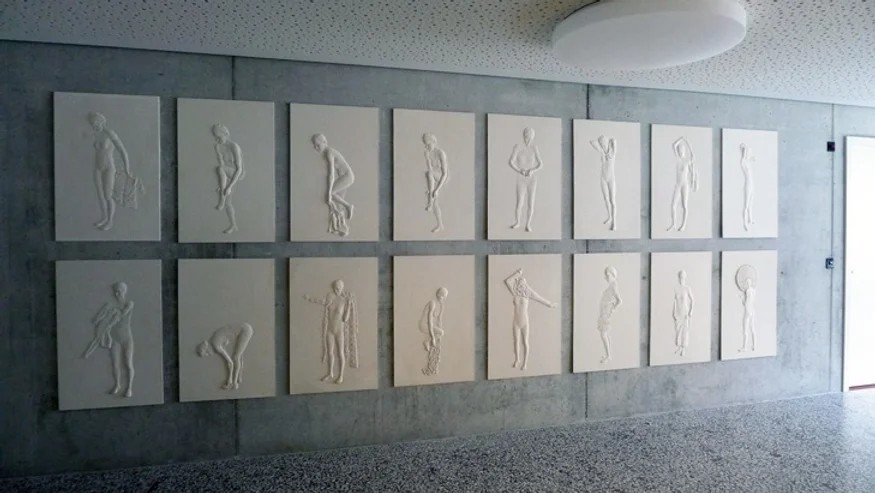
Maja Thommen, Dressing
One of Maja’s first pieces was Extension of Ego and now it takes pride of place in her studio. Maja still loves it and it represents the theme she still develops of externalising human traits in her work.
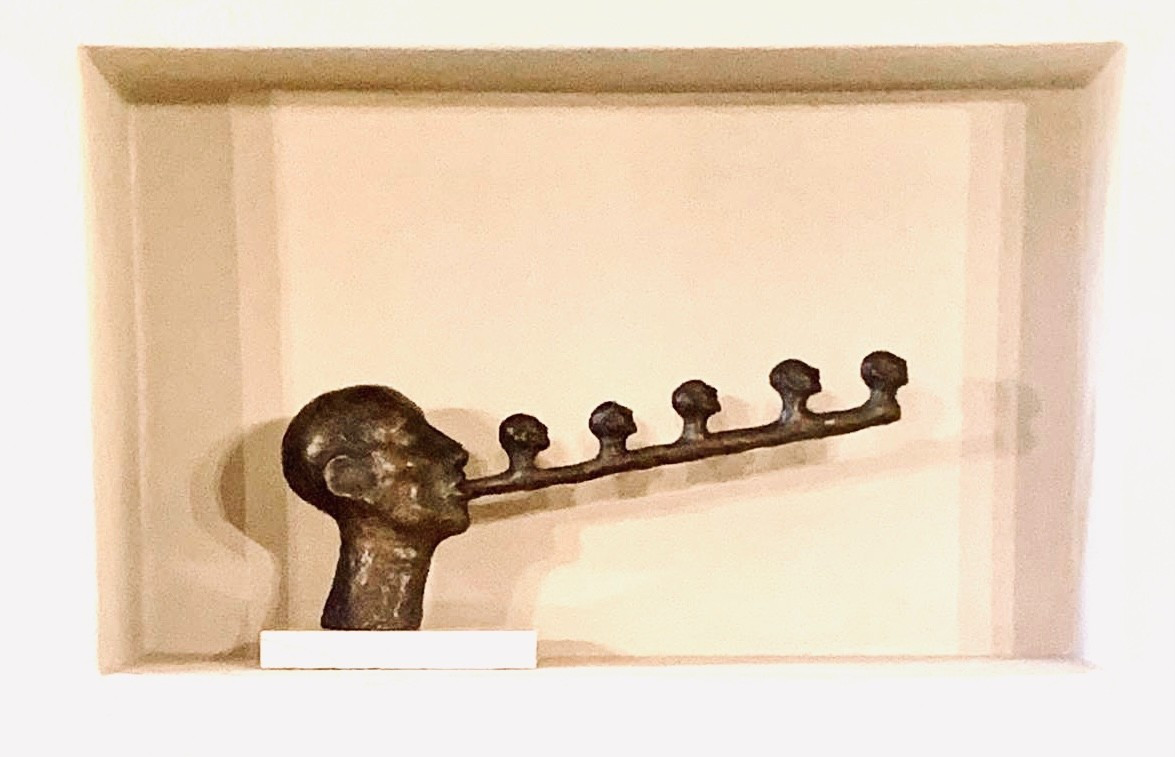
Maja Thommen, Extension of Ego
Labrynth is another of Maja’s pieces that follows the theme of a body’s outside reflecting what is inside.
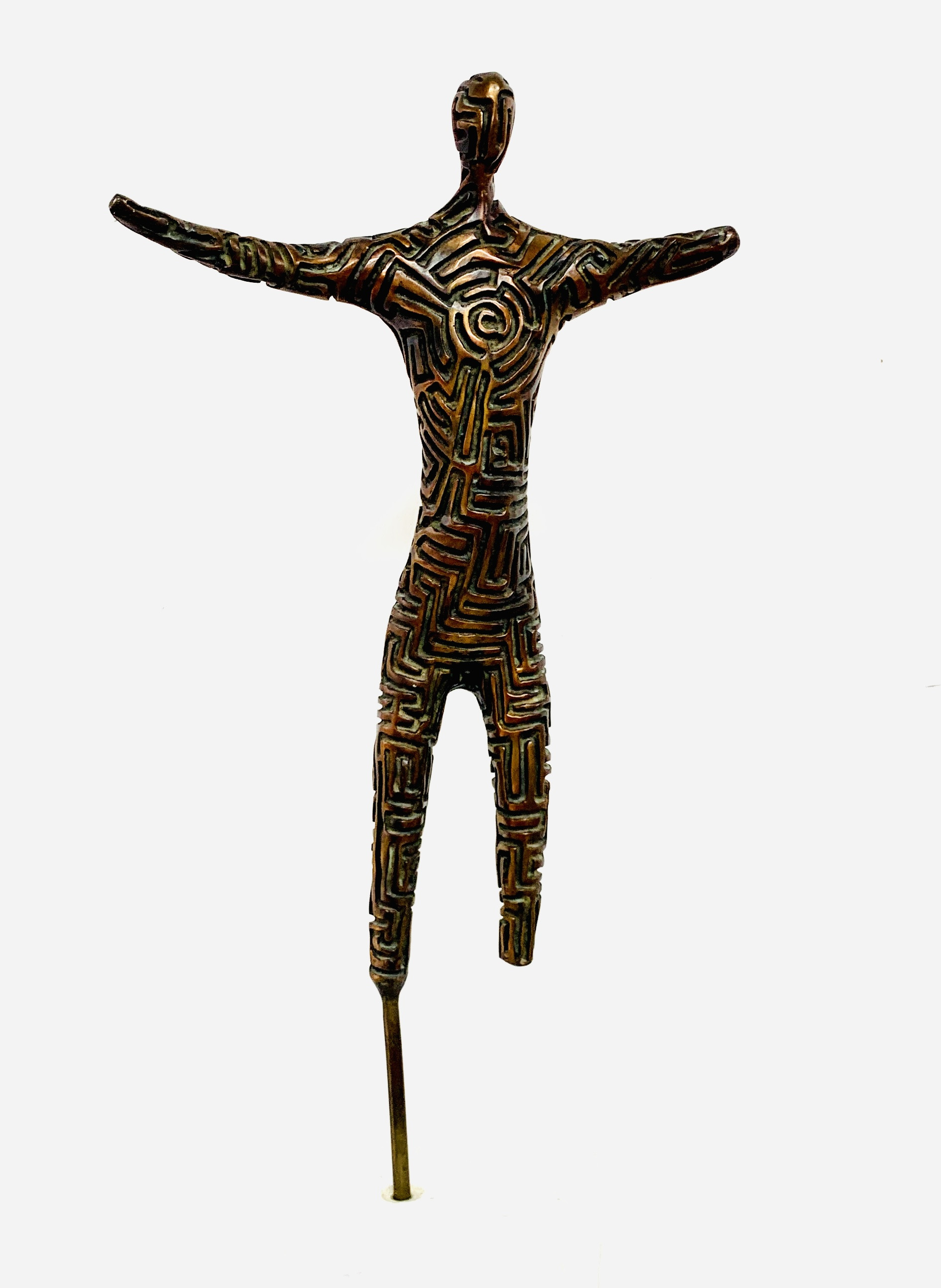
Maja Thommen, Labrynth
Credits
Producer: Sarah Monk
Producer/editor: Mike Axinn
Music: courtesy of Audio Network
AN-Morning Light 2497_7, Lee Pomeroy & David Michael
The more time passes, perfection becomes more important to me. Like people used to like that in my pieces you could always see my fingerprints and the non perfection. While now I’m doing the opposite, I’m looking for very perfect surfaces. Also, you know, in this learning curve is that personally for myself, and I’m not saying that for other artists, but for myself, I think beauty carries a message. So right now I’m looking for a beauty of perfect shapes.
Sarah Monk:Hi, this is Sarah with another episode of Materially Speaking, where artists and artisans tell their stories through the materials they choose. Today, Mike and I are climbing a hill above Kamayuri to speak with Swiss sculptor, Maja Thommen, who’s from Zurich. We meet her at her home, Artists Hill, an old farmhouse surrounded by olive groves, which she has renovated into a home, studios and a part that she rents out. Maja shows us the room where she draws and then we move over to her new modelling studio, opposite the house. In the middle of this room, towering above her, is a spiral column.
Sarah Monk:It’s a plaster cast soon to be realised in acrylic resin and earth. She says this piece was inspired by the feeling of having a spiral inside herself. It’s kind of a self portrait. Maja walks towards the spiral and shows us how the sculpture is made to be hugged. We ask Maja to introduce herself.
Maja Thommen:I’m Maja Thommen from Zurich. I moved to Italy in 1991. I never had one second thought to go back to Switzerland. Was very committed to my Italian life. I had an Italian grandmother too who prepared me.
Maja Thommen:And I found sculpture rather late, when I was 26, but i’m more passionate than when I started doing it.
Sarah Monk:You’re on fire!
Maja Thommen:I’m on fire, yeah. I feel like that.
Sarah Monk:So do you want to tell us a little bit about your childhood and your family?
Maja Thommen:I’m from a rather intellectual family, I would say. My mother had grown up in Milano and my father was a forest engineer, but a very intellectual guy with many interests. I was supposed to become a lawyer or study economy too or something. So I did one year of political science in Geneva, met a lot of international people, had a very interesting year. Financed it all by myself because my parents were against my going to Geneva.
Maja Thommen:To make a long story short, then I did many different things. I was a travel guide. I spent almost a year farming on a self sustaining farm in Southern Tuscany.
Sarah Monk:So what brought you here, the fact that you had Italian heritage or?
Maja Thommen:I always wanted to leave Switzerland. It’s one of these things that you can’t really explain. Even when I was a child and we went travelling abroad, I never wanted to go home. I always wanted to stay outside Switzerland. So I tried different other options before coming to Carrara.
Maja Thommen:In Switzerland, I had tried several art schools, you know, exams, admission exams. I never passed. You know, I was not mainstream what art schools were requiring. And at these times, it was very easy in Switzerland to find jobs and make money and I had worked for a year as an educator for difficult children without any, you know, diploma for that or anything. But in that year, I made so much money that I moved to Basel and I didn’t have to work and I went to some art classes and I went to tombstone sculptor in Scalpelino, as you would say here.
Maja Thommen:I always said, I just want to learn the technique, you know, because I thought if I became an artist, I would go crazy. That probably comes from my family that was not very art inclined. So this guy, I was very lucky, he said, Oh yeah, I have space in my shack on the other side of the street and you can start tomorrow. So I started going there on the day. He gave me an old tombstone, he gave me tools, gave me some indications.
Maja Thommen:And it was my big enlightenment moment, I had these tools in my hand and I said, that’s it, that’s exactly what I want to do. So I stayed nine months with him and I worked by hand, did a few sculptures, and then from there I just had this idea that Carrara could be specialised for sculpture, but I had never been in Carrara before. But through the consulate, I applied for the exams, went to do the exams. My self esteem was very low. After three days, we had this kind of Italian exam and I was like, when will we get the results?
Maja Thommen:You know, and they just looked at me like very surprised, saying, School starts in two weeks, like everybody passed. So that was my big success story, but you know, nevertheless, I just raced back to Switzerland, moved all my things out from, you know, where I was living. And two weeks later, I was ready to go.
Mike Axinn:You were in Carrara and then now you’re here, which is within thirty minutes of Carrara. What happened in between?
Maja Thommen:After one year at the academy and living in Carrara and being surrounded by people who worked in marble, I got very how do you say sober about marble. And at the time, the Academy had a bronze foundry still. And I got very intrigued by the casting techniques. And I started to do little bronzes, so I started to come to Pietrasanta very much. I lived with a Japanese sculptor who was much older than me and she was some casting genius.
Maja Thommen:Yeah, I just learned from other sculptors.
Mike Axinn:In terms of your work, is there a line from the type of work you were doing then to what you’re doing now?
Maja Thommen:That’s a good question. You know, the years I was like a locomotive. I just went through all the styles, I tried out everything from expressionism to cubism. But I started doing a lot of small bronze sculptures, little figures that together became like patterns, not geometrical shapes, but, you know, they would form patterns. So one thing which has always been in my work is, you know, having different layers of meaning also or having figures with an abstract shape.
Maja Thommen:For example, this bronze head over here, which is called Extension of ego. Extension of ego is one of my oldest bronzes and also the labyrinth, you see there on the floor. Maybe the labyrinth even more. You see it’s a figure but it has a labyrinth on its body, I still do a lot of pattern on surfaces.
Mike Axinn:So this work, The Extension of Ego, you say it’s early, so how old were you when you did that? How long ago was that?
Maja Thommen:I was probably 28 or 29. I was still at the Academy.
Mike Axinn:And here it is in your studio.
Maja Thommen:Yeah, it’s the lot, you know, I sold an entire edition, but I kept one piece. Normally, I don’t like too much to have my own work around me. I like it to travel out, also at my house, I don’t have many things for myself. But Extension of Ego for me was like a milestone piece and I still like it. I still connect with it a lot.
Maja Thommen:But if I can sell it, I sell it.
Mike Axinn:You have a wonderful life here. You’ve got this amazing piece of property with studios. So you’ve made a career as an artist, as a professional artist, a successful one. And how did you do it?
Maja Thommen:In my case, I can say just work, work, work, you know. I was always producing, was always proposing, I was always going out and one thing that I’m good at is to create a bond with my clients and my collectors. I must say one thing. Everybody thinks the big money is in Switzerland and it’s easy to sell sculptures in Switzerland. But what I do is not mainstream, but in Switzerland, contemporary sculpture is much more conceptual and I was in a situation where I felt like I was considered an artisan, like being a bit lower person than a real artist, which can be offensive, but in Switzerland, that’s really strong.
Sarah Monk:So you do figurative and abstract?
Maja Thommen:Personally, I don’t make this distinction. You see a column, you think it’s abstract. As I said, it’s a self portrait, it could be someone else. It’s something which is within us. So I don’t really like that distinction too much.
Maja Thommen:The six years prior to Covid, I spent a lot of time in Iceland. I was very lucky. I did a small residency and then I met a guy who had built a huge building, like on a moon landscape in the middle of nowhere. He had built a building for musicians with everything, with stage and equipment, everything. But when it was not used by musicians, he was very open and he liked my work and he offered me to stay there.
Maja Thommen:And I went a few times and I spent months there and the impact of the Icelandic landscape was very strong on me and somehow I have shifted.
Sarah Monk:I was just going to ask you, show me your drawing room. I wonder whether you could tell us your process, like do you start with a sketch or?
Maja Thommen:I draw a lot and also Iceland helped me in that because I couldn’t really do sculptures there. So I did a lot of drawings. And usually, I do a cycle of drawings and it takes usually two, three years that these drawings turn into sculptures. The drawing is just from your brain into your hand onto the paper. It is so easy, you know, while sculpture needs preparation, material and you think about it.
Maja Thommen:I always model, I mean my favourite work is always modelling, clay or plasticine. But then I make casts. I am used to work always in copies or small editions. Now in these columns, I have to cast them because I can’t keep them in clay. I am actually back to this one small foundry that I’ve worked for ages with.
Maja Thommen:I’ll never forget that when I was at the Academy, he allowed me to bring my waxes, recharge them myself and at the time his foundry was really tiny but I could be in a corner and he helped me keep my expenses low. And he was investing in the future because I kept, you know, being a faithful client to him and he’s like a family member now.
Mike Axinn:We always talk about materials. Can you talk a little bit about your materials and what you use and how that’s changed too?
Maja Thommen:So after the academy, I worked for fifteen years only in bronze. I like metal, I like the fire aspect of it, the melting of the metal. I like the fact that I can put my hands on all the different work steps, that I can make changes. I mean, I like everything about bronze. But then after fifteen years, I was like disenchanted.
Maja Thommen:I was all of a sudden, I was a bit fed up of the patinas. Maybe I also got a bit allergic to the wax fumes, which are always in your nose. And especially what I didn’t like anymore is how bronze is this prestige thing, you know, and the patina looks classic. I had one of my very few real inspirations from other artists, which were Assyrian barley leaves. I was in New York and I saw a huge show at Met.
Maja Thommen:And I started doing barley leaves. That radically changed my work at the time. My gallerist only half followed it because I had all these clients that wanted bronzes. Plus, the gallerist started doing shows where always the sculptor and the painter, so the painter has the walls and I have the space and then I make barley leaves, so I was taking space away from the painters, which, you know, I wasn’t happy with. But I did these barley leaves in this material.
Sarah Monk:What is that material?
Maja Thommen:This is acrylic resin, it’s non toxic and it allows me to do very thin work, very detailed. And I loved it being non pretentious. I was looking for material that was just all about the surface and nothing else, like that the material didn’t have anything to say. So I did a lot of that and also I love working white in white because I see the barley leaves as becoming part of a building or a wall, so they almost disappear in a wall. And I must say, am always a bit disappointed when a lot of clients, they paint a frame around it or they put it on a coloured wall so you see it better, while the visibility is just done with the right illumination, you know.
Maja Thommen:Anyway, but from the barley leaves, I really opened up to all different materials. It’s very difficult to make thin barley leaves, so I started using different resins. And for example, you see that piece over there, this is aluminium cast in sand casting technique. I started doing a lot of sand casted metal pieces welded together. So it’s like barley leaves that become sculptures over there on the shelves, you see also some of those.
Maja Thommen:And I even did some laser cut pieces in stainless steel. I started to do more clay and ceramic, but I never call myself a ceramist because I just work monochrome. I’m not entering the whole world of the places and all of that. And then my last discovery and big passion and something I do on the side is porcelain and slip casting. That’s like, I love it!
Maja Thommen:So once in a while I have months where I just do little vases and objects.
Sarah Monk:Can you tell us about porcelain casting? I don’t know anything about it.
Maja Thommen:You know, it’s a very antique technique that already the Romans and Etruscans used, you know, they use moulds and they are either you press the clay in it or you pour liquid ceramic or liquid porcelain in it. And the plaster and the mould absorbs the liquid, so you keep it a few minutes inside and a layer remains attached. You pour it out and then the shape inside is hollow and it shrinks and you open the mold and it jumps out like an Easter egg. It’s like really fun. I mean, it needs very delicate hands.
Maja Thommen:Yeah, porcelain is incredible. But in Italy, you know, everything is maiolica and ceramic, and I’m lucky, but I have a friend who has two kilns and she does high fire. I mean, the biggest difference is that you fire porcelain at 300 degrees. So it’s actually stronger than ceramic, but there are very few places here in the area where you can do that.
Sarah Monk:For the sake of argument, we suggest you think of three pieces that over the years are important to you.
Maja Thommen:I can say a few words, the pieces I already mentioned, Yeah. The extension of ego and that power leaf and the project of the spiral.
Maja Thommen:So my early bronzes were very much centred on humans and their social life and their interior life. The extension of ego is for me just a piece that has some of the humor in it that I often have in some pieces, also in the titles of the pieces. It’s a person who, through the mouth, extends himself.
Maja Thommen:So you can see it’s a big talker and let’s say something psychological becomes visual. At the same time, I did many figures that had a surface, for example, little chameleons or the skin of the person was showing what’s inside.
Mike Axinn:It’s interesting for me that you have this piece that you still love that you did when you were 28. But, you know, we think about learning curve. How different are you as an artist?
Maja Thommen:Very good question, because I realized not long ago that when I was this age, my goal was to make work that was universal, that would be about the people or about the world. And I didn’t want to speak about myself. So I believed that my work was coming from outside. While this has completely flipped over, because in all these Iceland years, I realised that the more personal I am in my work, the more universal I become, you know, because you find it within yourself. So that for me was, I think, an important process and you call it learning curve, learning curve about myself.
Mike Axinn:What about in terms of technique?
Maja Thommen:Technique, I can say that the more time passes, perfection becomes more important to me. Like people used to like that in my pieces you could always see my fingerprints and the non perfection, But now I’m doing the opposite. I’m looking for very perfect surfaces. Also, you know, in this learning curve is that personally for myself, and I’m not saying that for other artists, but for myself, I think beauty carries a message. So right now I’m looking for a beauty of perfect shapes or clean lines and it’s all curves, you know, everything is rounded.
Maja Thommen:But my early pieces were not so concerned about the factor of the beauty.
Sarah Monk:I was wondering if you could tell us about these two, the labyrinth.
Maja Thommen:This is the model of my biggest commission so far. I won a competition in Germany to make an over life size bronze for a public space. The town is on the river mine and they produce basalt and they have like a medieval tower, which on the model you don’t see the tower, but the piece that I made very large has on the rock like the points of the tower.
Mike Axinn:Is that supposed to be water?
Maja Thommen:He is called river god. So why is he a naked man? Because, interesting enough, Mine and Rhine are the only two rivers that are male and all the other rivers in Germany are female. So I had to make a male figure. The main thing about this figure is the centre of the labyrinth that everybody looks for the centre of the labyrinth is at the heart.
Maja Thommen:So, very banal, find your heart. So I love to get into a theme and it becomes a bit like an illustrated story. This is part of 16 panels, it’s called dressing and it’s a very big work. I worked like nine months on that. But religion, the question was, can we change religion like clothes?
Maja Thommen:Or is religion something inherent to us? Is it like part of us? So she’s all in these different poses, so you have this movement that creates a composition. And the last piece of the series is a figure with a big aureola, where the humans put themselves in the centre of this cosmos. So it has a lot of ironic, sarcastic little details.
Maja Thommen:Then it starts with Stone Age. So that was maybe a more intellectual work of mine, but I learned all the techniques of barley leaves in it. Now I’m back to freestanding sculpture. And I did many small spirals in ceramic. So the spiral has been growing.
Maja Thommen:And last fall, I had a serious crisis. I thought that sculpture was just dead material and that I had to be more useful to the world. And I don’t know, you know, I was asking me all these questions. Then, I don’t know, it just made it click and I decided to make a big spiral. And making this spiral has energized me.
Maja Thommen:It was giving me more energy than I was putting into the spiral. I usually don’t go above human size. You know, I don’t like monuments. Actually, I hate monuments. I like sculpture that has a human dimension where you can relate to it.
Maja Thommen:I think as an artist you learn also how people react individually to your work. They are attracted by what mirrors them. If you are tired, hug a spiral and it will energise you, hopefully.
Sarah Monk:So thanks to Maja, you can see her work on her website, majathommen.ch or on Instagram @thommenmaja. As always, you can find photographs of the work discussed today on our website materiallyspeaking.com and on Instagram @materiallyspeakingpodcast. If you enjoy Materially Speaking, please join our community and sign up to our email newsletter on our website. We’ll then update you on future episodes and special events.